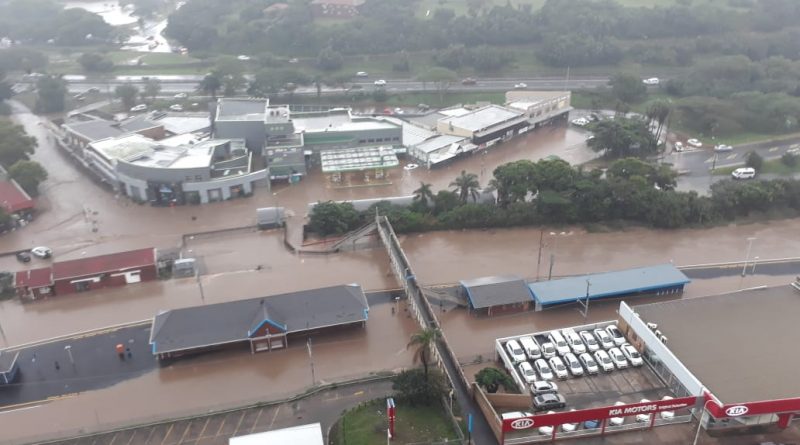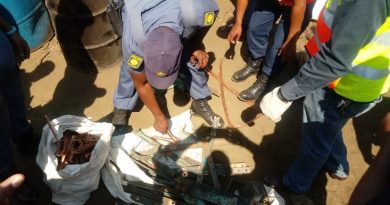Heavy Rain and Flooding – 17 Tips to Stay Safe!
With parts of South Africa being ravaged by heavy rain and floods, leading to loss of life and significant damage to properties and vehicles, Auto & General Insurance is urging South Africans to be vigilant and adopt a proactive mindset to avoid disaster.
Ricardo Coetzee, Head of Auto & General Insurance, says: “What starts out as a couple of drops of rain can very rapidly develop into a very serious and life-threatening situation. South Africans are urged to take practical steps to better protect themselves and to have proper emergency plans in place.”
Auto & General offers the following tips:
GENERAL RULES TO REMEMBER:
- General and regular home maintenance, like checking structures around your house for weak spots, clearing debris from gutters, cutting away dead trees and branches and ensuring adequate drainage of water, is essential and will significantly reduce your risk. Reinforcing vital structures if you live in a rain / flood-prone area is also a good idea.
- Good vehicle maintenance – making sure that your vehicle is in tiptop shape and won’t let you down, even when the proverbial “high water” comes.
- If you notice that there’s insufficient drainage, or a possible safety hazard due to cracking structures and roads, landslides, rock falls etc., in a public area, alert the authorities immediately.
- Always keep an eye on the weather forecast, look out for warnings of heavy rains and avoid danger areas – like roads where drainage is poor – wherever possible.
- Make sure to have all emergency numbers, including that if your insurer, saved on your phone or memorised. Make sure that your whole family is thoroughly briefed on what to do and who to call in the event of an emergency.
HEAVY RAIN:
Make sure that your outdoor furniture and accessories are safely stored or firmly secured and that all gates and doors that need to be locked, are.
- Heavy rains are often associated with lightning. The power surge of a lightning strike can easily overload most appliances and devices. It’s best to unplug these before the storm arrives.
- Where possible, park your car under cover and delay travelling until the storm has subsided.
- If you are caught in a heavy storm and you feel it’s not safe to drive, look for cover, pull over and/or seek shelter. This could include a covered car park, a petrol station or under a bridge. However, take extreme care when pulling-over, put on your hazard lights, and don’t risk your safety or the safety of others by dashing madly for cover. Stay in your car and only leave the safety of your sheltered spot when the storm has passed.
- Don’t park under trees as there is a danger of falling branches and debris.
FLOODS:
- It is sensible to purchase your own supply of sandbags, especially if you’re in a flood-prone area, like one close to a river or on a hillside. These can be placed against doorways and low-level vents in times of flooding to help minimise the amount of water that enters your home.
- Move high value items to the highest possible floor or shelf if a flood threatens.
- Turn off electricity and gas supplies if flooding occurs to limit the risk of electrical shock or a fire.
- If you see warning signs like water seeping through the door or water eating away at your home’s walls and foundations, it’s best to head for higher ground immediately. Do not wait for it to become a life-threatening crisis.
- Motorists should not attempt to drive in flood conditions. Remember that just 15cm of moving water can knock you off your feet and water just 60cm deep can sweep a vehicle away. You also run the risk of flooding your vehicle’s air intake, which will stall the engine. Generally, if the water is deeper than the bottom of your doors or the bottom third of your wheels, it is not advisable to drive through it.
- Flash flooding often occurs when rivers flow over low-lying bridges. Avoid crossing bridges or roads next to rivers during heavy rains. If you do get stuck on a flooded road, it’s best to switch to the lowest possible gear and proceed slowly.
- If you approach a flooded spot at speed, it is advisable to take your foot off the accelerator and let your speed drop gradually. Never use the brakes suddenly because this may cause the car to skid or aquaplane.
- If your vehicle gets stuck during flooding, or starts to get washed away, rather abandon the vehicle and climb to higher ground. It is dangerous to try and drive out of the water to safety.
“It’s wise to remember that your life and that of your loved ones is worth more than any house or car, so don’t risk it at any cost”, Coetzee concludes, “Also ensure that, in the event that disaster does strike, you have adequate insurance in place to cover the complete repair or replacement cost of your house, vehicle and other possessions.”
Please Stay Safe when Driving in Bad Weather! https://t.co/GAqBfGPie3 #ArriveAlive @ReenvalSA @peoples_weather @SAWeatherServic @TrafficRTMC @RAF_SA @DoTransport pic.twitter.com/X2RT1H5zYz
— Arrive Alive (@_ArriveAlive) April 21, 2019




